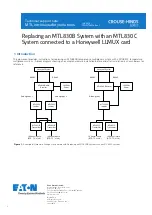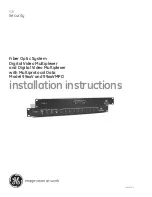
c.
Do not touch a high voltage circuit when measuring high voltage.
3.3 CURRENT MEASUREMENT
3.3.1 Insert the black test lead into “COM” jack, the red one to “mA”
or “20A” jack.
3.3.2 Set the range knob to “A: range, If the measured current is
unsure beforehand, set the range knob to the highest range,
then reduce it gradually until get the highest resolution
readings.
3.3.3 Press DC/AC key to select DC or AC testing mode.
3.3.4 Connect the test leads to the circuit under test, the LCD
displays the measured voltage value.
NOTE:
a.
If LCD displays “OL”, it means over range, set the range knob to
a higher range.
b.
When measuring current,
mA socket should not exceed 200mA,
20A jack should not exceed 20A (test time should be less than
10 sec.), the test leads should be off the test point when
switching the function and range.
3.4 RESISTANCE MEASUREMENT
3.4.1 Insert the black test lead to “COM” jack and the red one to
“V/
Ω
/Hz” jack.
3.4.2 Set the range knob to a proper resistance range; connect the
test leads across to the resistance being measured.
NOTE:
a.
If the resistance value being measured exceeds the max value
of the range selected, LCD displays "OL", set the range knob to
a higher range. When the resistance is over 1M
Ω
, the meter
may take a few seconds to stabilize. This is normal for high
resistance readings.
b.
When input terminal is in open circuit, overload displays.
c.
When measuring in-line resistance, be sure that power is off and
all capacitors are discharged completely.
d.
Do not input any voltage at this range.
3.5 CAPACITANCE MEASUREMENT
3.5.1 Set the range knob to a proper capacitance range and insert
the red test lead to “mA” jack and the black one to “COM” jack
3.5.2 connect the test leads to the capacitor being
measured
(
note:
the polarity of red test lead is “-”
)
.
NOTE:
6






































